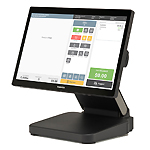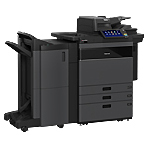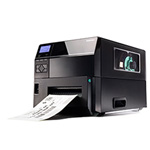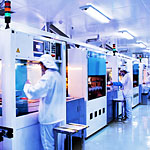Success story - Melbourne Olympic Parks
 Widely regarded as Australia’s premier sports and entertainment precinct, Melbourne & Olympic Parks plays host to an extensive range of events, such as international tennis, athletics, music concerts and family shows. Founded in 1995 as the result of joining together Melbourne Park and Olympic Park, its multiple venues, which include the Rod Laver Arena, Hisense Arena and Olympic Park Stadium, become hives of frantic retail activity during sporting events and concerts. So much so, that when the incumbent POS infrastructure was unable to keep pace, it was soon replaced with a comprehensive Toshiba TEC-based solution.
Widely regarded as Australia’s premier sports and entertainment precinct, Melbourne & Olympic Parks plays host to an extensive range of events, such as international tennis, athletics, music concerts and family shows. Founded in 1995 as the result of joining together Melbourne Park and Olympic Park, its multiple venues, which include the Rod Laver Arena, Hisense Arena and Olympic Park Stadium, become hives of frantic retail activity during sporting events and concerts. So much so, that when the incumbent POS infrastructure was unable to keep pace, it was soon replaced with a comprehensive Toshiba TEC-based solution.
Challenge: Achieve optimum sales turnover
A significant component of Melbourne & Olympic Parks’ business is its merchandise retail operation. So significant in fact, that Rod Laver Arenaduring a single concert it’s not unusual for merchandise sales to reach the $300,000 mark. During the two weeks of the Australian Open, that figure can climb as high as nearly five million dollars! It’s hardly surprising then that the organisation’s Merchandise Manager, Jennifer Castle, expects nothing less than absolute excellence in POS hardware, software and support.
 In early 2008, though, ongoing problems relating to reliability, speed and management were plaguing the organisation’s third-party POS environment. According to Jennifer, the middle of 2008 was the point in time when something had to be done. “The systems – hardware and software – were simply proving themselves to be inadequate for massive transaction processing loads we place on them,” she said. “Our retail POS environment didn’t have the performance levels required to deal with our customer demands.”
In early 2008, though, ongoing problems relating to reliability, speed and management were plaguing the organisation’s third-party POS environment. According to Jennifer, the middle of 2008 was the point in time when something had to be done. “The systems – hardware and software – were simply proving themselves to be inadequate for massive transaction processing loads we place on them,” she said. “Our retail POS environment didn’t have the performance levels required to deal with our customer demands.”
Solution: Toshiba TEC
 With a comprehensive request for tender put out to the market in June, Melbourne & Olympic Parks received six tender responses, each of which was subjected to thorough evaluation and scrutiny. Ultimately, it was a Toshiba TEC hardware and a third-party retail software solution that emerged the clear winner. Located across seven retail outlets and consisting of 27 Toshiba TEC WILLPOS A10 touchscreen terminals, TRST-A10 thermal POS printers and DRWST-51A cash drawers, the new solution is already paying for itself.
With a comprehensive request for tender put out to the market in June, Melbourne & Olympic Parks received six tender responses, each of which was subjected to thorough evaluation and scrutiny. Ultimately, it was a Toshiba TEC hardware and a third-party retail software solution that emerged the clear winner. Located across seven retail outlets and consisting of 27 Toshiba TEC WILLPOS A10 touchscreen terminals, TRST-A10 thermal POS printers and DRWST-51A cash drawers, the new solution is already paying for itself.
Reliability and speed – critical factors
Once the new POS environment had been rolled out, the improvement to the organisation’s retail performance was immediate. Due to the WILLPOS A10’s high-speed CPU, the software on each terminal is able to process transactions in a fraction of the time than was the case with the legacy system.
This is further enhanced by the speed with which the TRST-A10 printers generate receipts for customers.
“During our peak periods, we quite often have customers standing 20 deep at the merchandise outlets,” Jennifer says. “Add to that the very small timeframe we’re able to take advantage of to make sales. In a single two-to-three hour period, it’s by no means unusual for transaction numbers to climb as high as 3,000; and with that load, it’s where the reliability and speed of the Toshiba TEC-based solution is giving us a definite advantage.”
This is in stark contrast to the legacy POS solution replaced by the Toshiba TEC hardware and third-party software. “Under our old system,” Jennifer says, “the unreliability and slow transaction processing speeds meant that staff and customers were often getting frustrated with the level and quality of service that it allowed us to provide.”
Cost does matter
 When Jennifer found herself faced with evaluating six RFT responses, a natural consideration was cost; and it was yet another point that came out in the Toshiba TEC favour. She explains: “I was actually quite surprised when I discovered that the Toshiba TEC WILLPOS A10 terminal was more powerful, had a larger and better screen, and was less expensive than other terminals detailed in various tenders.”
When Jennifer found herself faced with evaluating six RFT responses, a natural consideration was cost; and it was yet another point that came out in the Toshiba TEC favour. She explains: “I was actually quite surprised when I discovered that the Toshiba TEC WILLPOS A10 terminal was more powerful, had a larger and better screen, and was less expensive than other terminals detailed in various tenders.”
On the issue of larger and better screens, Jennifer states that the WILLPOS A10 in conjunction with the new retail software is playing a significant role in improved retail performance. On-screen buttons that can be colour coded for quick identification, a bright display that is easily read regardless of lighting conditions, and – of course – a robust design that ensures the entire touch-screen terminal can withstand the rigours of one of Australia’s most high demand retail environments.
Key among the factors contributing to that robustness is a distinct absence of ‘spaghetti’ – the mass of cables that so often cause problems with many third-party systems. “We have a single cable coming out from each terminal,” Jennifer says. “With the old system, it was about seven; and with each of those cables, the chances of accidental unplugging increased.
“What it all boils down to is that we now have a complete retail POS solution that our staff members find easy to use, is totally reliable, can withstand the roughest of treatment and is ensuring we’re able to provide the speed and quality of service that’s crucial to our bottom line.”













